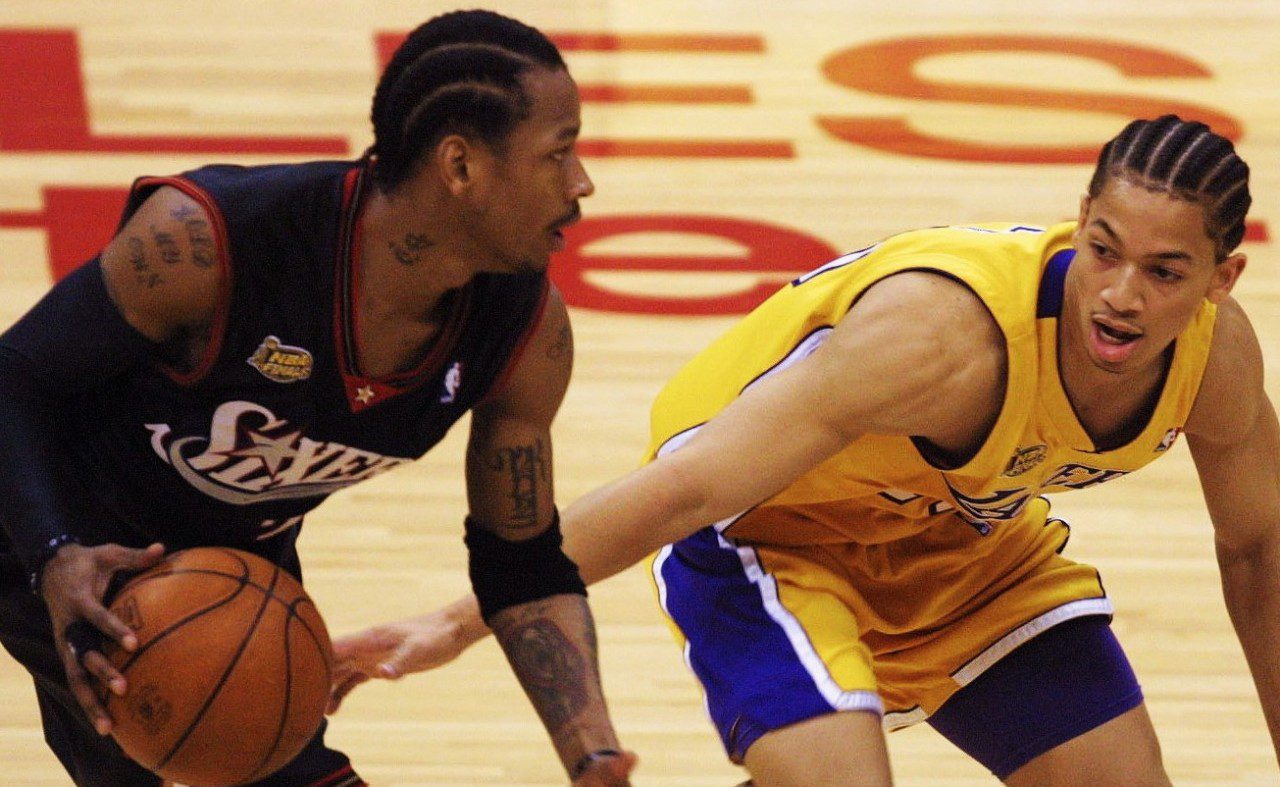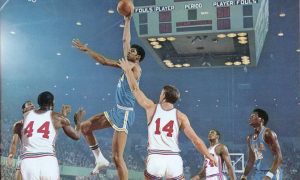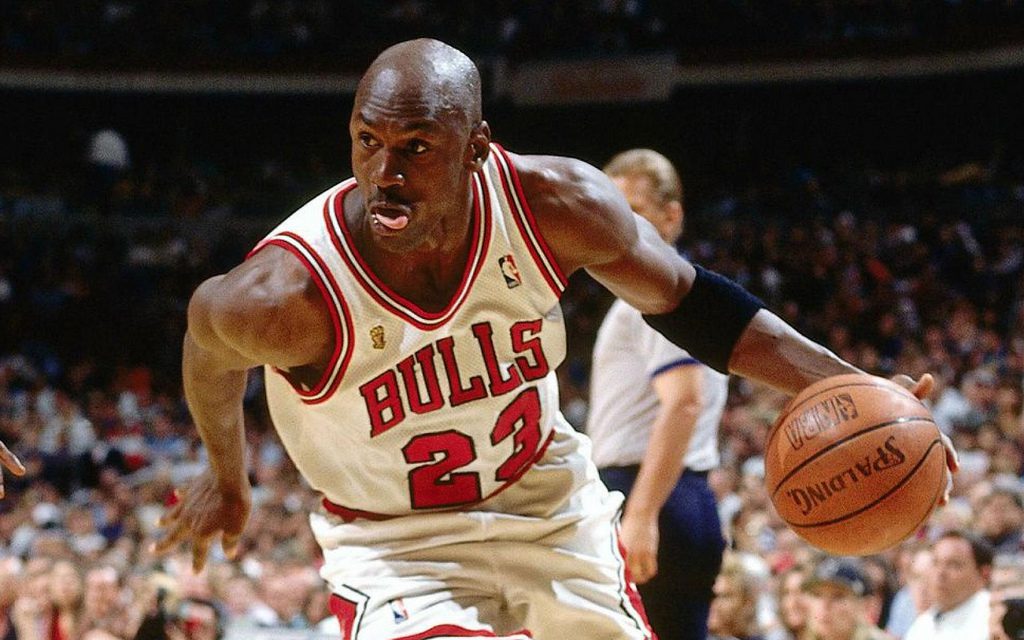The All-Time Starting 5 Series comes from a fun hypothetical that got my friends and I through many a hazy weekend morning in college. Somehow it involves both basketball and the Bill and Ted movies—er, films. I refer you to an excerpt from an old blog post:
The premise is pretty simple: there’s a basketball tournament going on in space (why in space? I really don’t know) and teams are composed of players with whatever common denominator happens to be the theme of the day (maybe they went to the same college, were born in Latvia or they’re left-handed). The kicker of course being you have a phone-booth time machine and can scoop any player up from any time. Kicker number two is that I’m too lazy to field teams of more than five, so (for my NBA Live fans) we’re switching to Arcade Mode and our guys are playing with limitless energy for 48 minutes.
Basically it’s a Basketball-Reference geekfest. For the series’ Baller Mind Frame debut, we’re talking NBA lefties.
Tiny Archibald, PG – Best Season: 1972-73 Kansas City-Omaha (That’s right—Omaha) Kings – 34 PPG, 11.4 APG, 48.8 FG%
Manu Ginobili, SG – Best Season: 2007-08 San Antonio Spurs – 19.5 PPG, 4.5 APG, 40.1 3PT%
Chris Mullin, SF – Best Season: 1989-90 Golden State Warriors – 25.1 PPG, 5.9 RPG, 2.1 SPG
Bill Russell, C – Best Season: 1961-62 Boston Celtics – 18.9 PPG, 23.6 RPG, 4.5 APG, a bajillion blocks
David Robinson, C – Best Season: 1993-94 San Antonio Spurs – 29.8 PPG, 10.7 RPG, 3.3 BPG
When compiling this team, it was at first surprising how much more depth there was at the big spots (not seen here: Artis Gilmore, Willis Reed, Dave Cowens, Bob Lanier, Billy Cunningham, and fringe guys, Chris Bosh and Derrick Coleman) compared to the guard and wing spots. But after a short ponder, my surprise was for naught. It makes sense that the left-handed pool is so top-heavy.
With so few height-qualified, mobile and able-bodied giants in the world to man the four and five spots on an NBA roster, the added quirk of superior coordination finishing with the left hand is an immediate and distinct advantage (not to mention the built-in comfort level of guarding right- and left-handed post players). But at the other positions, the pool of prospects on the path to the NBA is much deeper and most are equally adept at driving and finishing with both hands.
The lesson as always: raise your top-one-percent-of-height kids as southpaws.
Speaking of those guard spots, though, the only player with a case for cracking the roster is Gail Goodrich, with Kenny Anderson and Nick Van Exel miles back in the rearview. There’s even less competition at the wing spots (sorry, Jalen Rose).
And why the two centers, you ask? I tend to trust accounts of Russell’s game, and if they’re half an indication, I’ll take his learning the power forward position (a position for which his size suits him in today’s game) over Bosh or even Cowens, who’s been known to slide to the four spot on occasion.
So what if neither big can stretch the floor? I don’t think the squad will have any trouble putting points up. And that front line is so menacing it made me consider how many spare balls NBA stadiums carry to replace balls catapulted 20 rows into the stands, or bashed repeatedly to the point of deflation.
Stand in awe of the Seven-Foot Shot-Swatting Southpaws.
You can e-mail me at [email protected].

















